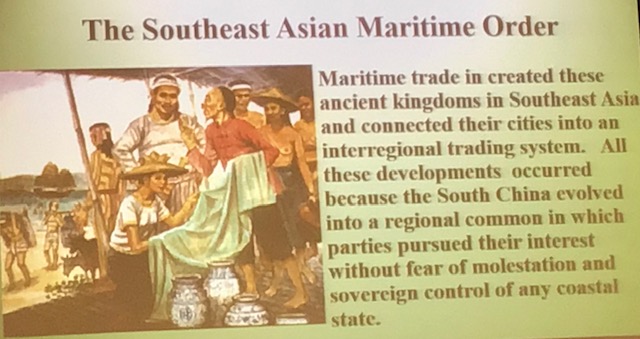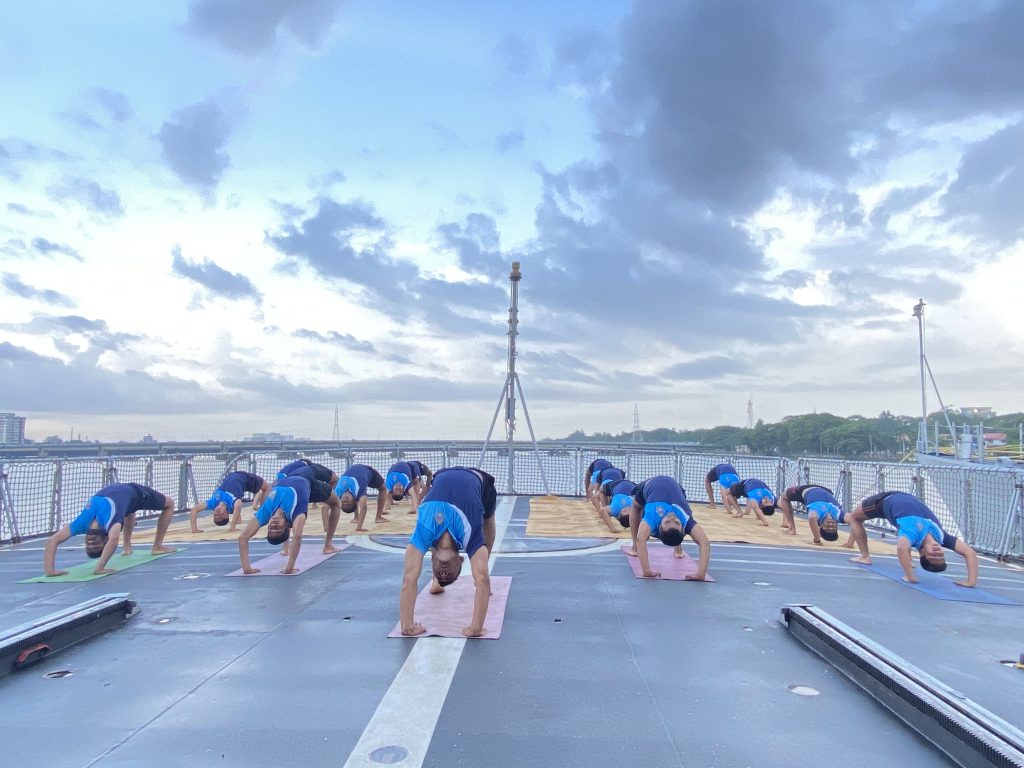On 28th August, the United Service Institution (USI) hosted the Chief of the Naval Staff Admiral Karambir Singh, the last in the series of lectures by the Chiefs of the services. The proceedings and the lengthy Q&A session were uploaded in real-time on Youtube with comprehensive coverage, depicting the importance of India’s Navy in the first half of this century. The subject was the “Transformation Of The Indian Navy To Be The Key Maritime Force In The Indo-Pacific”.
While other lectures by Chiefs were service-specific and equipment-oriented, the CNS on the Indo Pacific region spoke of its construct, its challenges and proved it was a predominantly maritime construct in what is a Maritime Century. The gallop of space technologies, mobility and internet communications (C4ISR), and multipliers like artificial intelligence(AI) and unmanned vehicles has brought about the binary changes in today’s state of peace and conflict, which have reduced the importance of land issues, he described and showed the confidence of the Navy as a net security provider.
For Nuclear Weapon Nations, going to war is not an option for the consequences that may follow. Even the Ladakh transgression by the PLA in 2020 witnessed a one hand to hand clash. Two Divisions plus handled the conflict with MEA and NSA and top Army leadership meeting counterparts from China to keep the powder dry as both militaries remained tense, and Indian Air Force went into play. Boots on the ground are now meant to occupy territory. The strength of the PLA(N) came up in Q&A as a fact India has to face.
CNS spoke of the aspiration of Indians and recommended an outward look as opposed to inward earlier, and drew a mental map of the Indo-Pacific for the audience, which is a technique of putting issues in a geo-strategic perspective and said India is at the core of the defining idea of our times.
CNS emphasized that the Indo Pacific region has taken prime importance as the area has 60% of the world trade, 61% of the world’s GDP, and 63% of the island nations with varied interests of the ambitions of the residing nations and countries like France, United Kingdom, and Germany also have lent interest besides the USA. He did not mention QUAD in his speech, but in Q&A, he said QUAD is ‘not marching together’ but is a CO-ORD and will gain in strength.
CNS did not list platforms of the Navy, but by maritime geography, he listed the bigger responsibility in the sea space and how Indian Navy copes and acts and though land centric strategies are relevant, maritime strategy has more capabilities and used the words, ‘Mare Labarum Freedom of the Seas’ and its advantages. He assured the audience India’s future Navy would cater to brown and blue water capabilities and maritime operations in peace and war, for which the Navy has a template. In the same tone and during his lecture, he did mention that a certain country (China?) is changing the name of the game in the Indo Pacific and went on to say that when somebody changes the name of the game (South China Sea?), there are also opportunities. I am reminded of the conversation in the epic Ben Hur when the Roman General, his friend Messala, suggests Romans must hurt Jesus, a Jew whose idea was flourishing; Ben suggests that better it was a new idea to offset the old. Ben Hur an atheist began to believe in Christ, who blessed him and cured his mother and sister of leprosy.

CNS spoke of the need for speed of operations in today’s age which also explains that there is a sensual need to have awareness so that there is readiness and spoke about the Indian Maritime Analysis Centre (IMAC) which is at Gurgaon and how the Navy has amalgamated artificial intelligence to get a map of what is the current scenario and looks to juxtaposing AI for analysis. CNS also stated that next door to IMAC is the Indian Ocean Region–Information Fusion Centre (IOR-IFC) which has the participation from 21 countries with six foreign officers and said three more are slated to join soon. He said these are the low-hanging fruits. He also spoke of maritime domain awareness (MDA) with long legs like the P8 I aircraft, satellites, and mission-based operations of ships at the choke points that can leverage geography with which India is blessed. Ships are tuned to be first responders and have medical facilities.
The CNS did not go into the figures because the audience, he mentioned “was quite informed.” He explained that he was a firm believer there is a need for future proof, blue water, and brown water Navy with unmanned vehicles and technology at the core. It is ample proof that he was speaking about the ships of the Indian Navy, which have quality, but there is a lack of quantity.
In the question-answer session, the Navy’s low (14%) budgetary situation of allotment from the Defence Budget came up with two participants commenting on the cost for aircraft carriers and another that the Indian Navy needs quantity and asked could leasing of ships help.
Admiral Karambir Singh clearly stated that there is a need to integrate the three services for mass. In the question-answer session, he didn’t say there is a shortage of platforms in the Indian Navy but mooted an idea that the Coast Guard in numbers has become equal to the Navy. This needs to come under the Navy for critical mass and coordination, and both put together will have greater strength. On lease procurement, as the Navy was the first to lease two Sea Guardian drones, he admitted Navy took the lead as it is in the Defence Acquisition Procurement (DAP) manual, but leasing needs cost analysis but did say the drones served in the mountains. A professional classified question would be was it line of sight VHF control, or by satellite from Ladakh or Himachal.

CNS listed the over dozen Navy ships currently exercising abroad in Europe, Alexandria, Guam (for Exercise Malabar 21, the 25th in the series), and Southeast Asia as the outward look for exercises and low-lying fruits. He also explained procurements now have a faster route.
Overall, it was a stimulating talk to understand India’s complex situation in the Indo-Pacific when Afghanistan has collapsed to the Taliban and could see a civil war in our backyard. Pakistan is not likely to forget India aided the Northern Alliance of Ahmad Shah Massoud, the Lion of Panjshir. The three services will have to be alert as news has come in US Navy has positioned the aircraft carrier USS Ronald Regan off Pakistan after the ISIS-K attack in Kabul killed 11 US military and Reapers may have operated from onboard.
